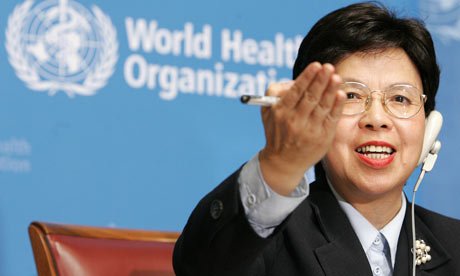WHO includes hep C, TB and cancer drugs in essential medicines list
May 11, 2015 | Monday | News | By BioSpectrum Bureau
WHO includes hep C, TB and cancer drugs in essential medicines list
Dr Margaret Chan, director-general, WHO (Photo Courtesy: www.theguardian.com)
The move opens the way to improve access to innovative medicines that show clear clinical benefits and could have enormous public health impact globally.
"When new effective medicines emerge to safely treat serious and widespread diseases, it is vital to ensure that everyone who needs them can obtain them," said WHO director-general, Dr Margaret Chan. "Placing them on the list is a first step in that direction."
Increasingly, governments and institutions around the world are using the WHO list to guide the development of their own essential medicines lists, because they know that every medicine listed has been vetted for efficacy, safety and quality, and that there has been a comparative cost-effectiveness evaluation with other alternatives in the same class of medicines.
The list is updated every two years by an expert committee, made up of recognized specialists from academia, research and the medical and pharmaceutical professions.
This year, the committee underscored the urgent need to take action to promote equitable access and use of several new highly effective medicines, some of which are currently too costly even for high-income countries.
These included new medicines to treat hepatitis C, which affects about 150 million people globally, killing approximately half a million people each year, when chronic infection develops into liver cirrhosis or liver cancer.
The disease is present in high- and lower-income countries alike, with higher concentrations in several middle- and low-income countries.
Until recently, treatment for the disease presented minimal therapeutic benefits and serious side effects.
Five new medicines - direct acting oral antivirals - have recently come on the market transforming chronic hepatitis C from a barely manageable to a curable condition, the new medicines have few side effects and high tolerance in patients.
All 5 products, including sofosbuvir and daclatasvir, were included in the list.
But high prices currently make them unaffordable and thus inaccessible to most people who need them.
Cancers figure among the leading causes of illness and death worldwide, with approximately 14 million new cases and 8.2 million cancer-related deaths in 2012.
The number of new cases is expected to rise by about 70% over the next 2 decades.
New breakthroughs have been made in cancer treatment in the last years, which prompted WHO to revise the full cancer segment of the Essential Medicines List this year: 52 products were reviewed and 30 treatments confirmed, with 16 new medicines included in the List.
TB remains one of the world's most deadly infectious diseases.
In 2013, 9 million people fell ill with TB and 1.5 million died from the disease.
Over 95 percent of TB deaths occur in low- and middle-income countries.
After about 45 years of scarce innovation for TB medicines, 5 new products were included in the EML.
Four of these, including bedaquiline and delamanid, target multi-drug-resistant TB.
The committee also recommended supporting off-label uses in cases where there is clear evidence of major health benefits, though no licensed indication, such as for many medicines for children.










